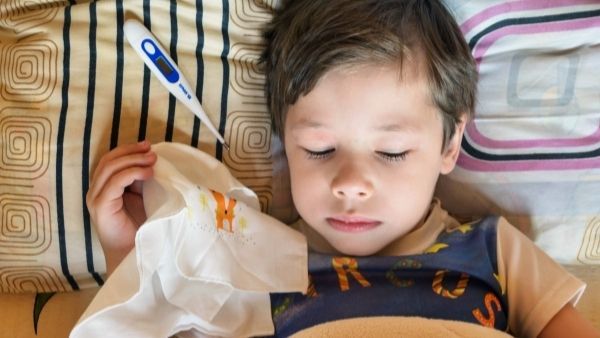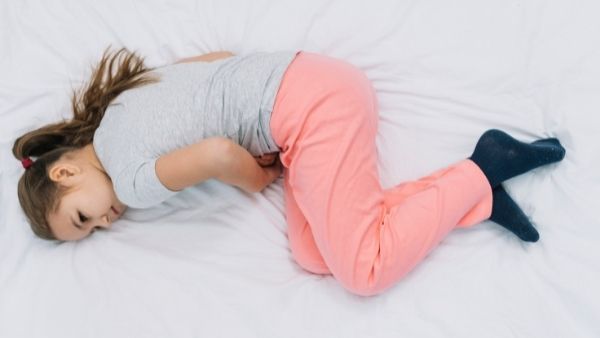Just In
- 3 hrs ago

- 6 hrs ago

- 7 hrs ago

- 9 hrs ago

Don't Miss
- Automobiles
 Ola Electric Hits New Milestone – 500th Service Centre Opened In Kochi
Ola Electric Hits New Milestone – 500th Service Centre Opened In Kochi - Sports
 KKR vs RCB IPL 2024 Playing 11: Kolkata Knight Riders vs Royal Challengers Bengaluru Team News, Predicted Lineup
KKR vs RCB IPL 2024 Playing 11: Kolkata Knight Riders vs Royal Challengers Bengaluru Team News, Predicted Lineup - Education
 Railway RPF Recruitment 2024; Apply Online for 4660 Post Vacancies @rpf.indianrailways.gov.in
Railway RPF Recruitment 2024; Apply Online for 4660 Post Vacancies @rpf.indianrailways.gov.in - News
 Who Was Max Azzarello, The US 'Conspiracy Theorist' Who Set Himself On Fire Outside Donald Trump's Trial?
Who Was Max Azzarello, The US 'Conspiracy Theorist' Who Set Himself On Fire Outside Donald Trump's Trial? - Movies
 Do Aur Do Pyaar Box Office Collection Day 2 Prediction: Vidya-Pratik's Rom-Com To Cross 1 Cr On Saturday
Do Aur Do Pyaar Box Office Collection Day 2 Prediction: Vidya-Pratik's Rom-Com To Cross 1 Cr On Saturday - Finance
 Elon Musk Postpones India Trip, Tesla's Indian Market Entry Delayed
Elon Musk Postpones India Trip, Tesla's Indian Market Entry Delayed - Technology
 Best Noise-Cancelling Earbuds Under Rs 5,000: CMF Buds Pro, Redmi Buds 5, Realme Buds Air 5, and More
Best Noise-Cancelling Earbuds Under Rs 5,000: CMF Buds Pro, Redmi Buds 5, Realme Buds Air 5, and More - Travel
 Journey From Delhi To Ooty: Top Transport Options And Attractions
Journey From Delhi To Ooty: Top Transport Options And Attractions
Common Diseases In Children, Their Symptoms And How To Prevent Them
As children's bodies build immunity to infections, they are prone to getting sick during their first few years. Although it's hard to prevent your child from ever getting sick, the tips below can help you avoid some nasty bugs and manage the illnesses.
Common Diseases In Children, Symptoms And Prevention
1. Respiratory Tract Infections
Colds, swollen tonsils, and sore throats are among children's most common respiratory tract infections [1].
Causes: Viral and bacterial infections attack your child's upper respiratory tract.
Symptoms: Chest congestion, swollen glands, a runny nose, and coughing are common symptoms.
Treatment: Generally, these ailments last between seven and ten days. Warm liquids can help your child recover from a sore throat. They can also gargle with lukewarm saltwater at regular intervals. Do not give your child any antibiotics to treat bacterial infections like strep throat unless prescribed by a physician. Most of these problems will resolve on their own within 5-10 days.
Prevention: Practice good hygiene by washing your hands, especially before eating or preparing food. Cough and sneeze only into your arm or a tissue, then wash your hands. And live a healthy lifestyle.

2. Ear Pain
Ear pain could be a sign of inflammation or infection. Infections of the ear canal usually appear in the inner ear canal (swimmer's ear) or middle canal (otitis media) [2].
Causes: As a side effect of a cold or due to the build-up of pressure in their sinuses, your child may develop pain (radiating from their ear to lower jaw). Children are more likely to be affected by Otitis media during the first and second years (peaking between months 6 to 18 months). They can be attributed to low immunity, exposure to second-hand smoke, and other allergies.
Symptoms: Ear pain, Fever, Fussiness or irritability, rubbing or tugging at an ear and difficulty sleeping.
Treatment: Consult a doctor immediately if you notice symptoms such as prolonged ear pain and loss of hearing.
Prevention: Things you can do to reduce your child's risk for ear infections include vaccinating your child, washing hands, breastfeeding, avoiding bottles in bed and smoke exposure and decreasing pacifier use.

3. Fainting
The lack of blood flow to the brain can sometimes cause children to faint at school or home (also known as syncope) [3].
Causes: An extreme physical (tiredness, exercising in the heat) or emotional stress can cause your child to faint. A fainting spell can also be caused by low blood sugar levels (hypoglycaemia), irregular heartbeats (Arrhythmia), or low red blood cell counts (anaemia).
Symptoms: Dizziness or light-headedness, nausea, sweating, or feeling cold suddenly, blurred or spotty vision, 'ringing' in the ears, pallor, and rapid heartbeats. A fainting spell usually lasts a few minutes, and your child will regain consciousness.
Treatment: Consult your doctor if your child suffers from prolonged spells of fainting or seizures.
Prevention: Consume a healthy diet and stay hydrated. Keep an eye on your child's blood pressure. Make sure they take frequent breaks from the heat. Teach your child how to recognize fainting symptoms early. For example, you should remind your child to lay down or put his head between his legs when his symptoms begin.

4. Skin Infections (Eczema)
Children often suffer from diaper rash, atopic dermatitis (also called eczema), warts, and acne [4].
Causes: Diaper rash or diaper dermatitis is caused by repeated skin contact with wet diapers, and pyoderma is a fungal skin infection that manifests as scabs and red blisters. A physician will need to prescribe topical antifungal creams to treat these infections.
Symptoms: Look out for itchy, dry skin and red spots around your child's knees during the first two years of your child's life since these could be signs and symptoms of eczema (or atopic dermatitis).
Treatment: According to the condition, dermatologists may recommend antibiotics, antihistamines, or laser resurfacing treatments.
Prevention: You should prevent your child from scratching their legs excessively when irritated. Woollen clothes and harsh soaps can strip the skin of its natural oils, so do not expose your child's skin to them.

5. Abdominal Pain, Diarrhoea, and Vomiting
Another common issue with young children is stomach pain (gastroenteritis). In addition, your child can have diarrhoea if they have frequent bathroom visits (more than thrice a day) and watery stools [5][6].
Causes: Bowel problems, infections, food-related problems, and problems outside the abdomen - muscle strain and migraines.
Symptoms: Constipation can present with symptoms contrary to diarrhoea (bowel evacuation less than thrice per week).
Treatment: Depending on what is causing your child's pain, the treatment will vary. The treatment may be as simple as sending your child home with instructions to rest, drink fluids and eat bland food. Another option is hospitalization or surgery.
Prevention: Ensure your child maintains good physical hygiene and eats home-cooked foods rich in fibre (to ease constipation) to prevent these occurrences. In addition, it is important to deworm your child regularly to prevent parasitic infections.

Common Childhood Illnesses Reported In India
Different climatic conditions, environmental factors, and other factors make some illnesses more common in some countries. These are some of the common childhood illnesses reported in children in India [7][8].
- Gastroenteritis: Gastroenteritis is an infection of the digestive system, and it is one of the most common childhood illnesses.
- Rickets: Rickets is a very common disease in developing countries due to Vitamin D deficiency.
- Conjunctivitis: Conjunctivitis is caused by inflammation of the conjunctiva -the outermost layer of the eye and the inner surface of the eyelids.
- Scabies: Scabies is an infection of the skin caused by tiny insects called mites.
- Upper Respiratory Tract Infection (URTI): Upper Respiratory Tract Infections are extremely common due to air pollution; infections include common cold, influenza, tonsilitis and sore throat.
- Tuberculosis: Tuberculosis affects children also and is known as Primary Complex or Childhood Tuberculosis infection.
- Typhoid: Waterborne diseases like typhoid are rampant in children due to poor sanitation. Cases of typhoid are more common in countries like India.
- Bronchitis and asthma: Bronchitis and asthma are common in children and are caused by high exposure to airborne pollutants.
On A Final Note...
Teaching your children to wash their hands regularly (before meals or after touching a pet) as well as keeping your household germ-free can go a long way toward reducing your child's risk of contracting contagious childhood illnesses and diseases.
-
 pregnancy parentingIndia's Maternal Mortality Ratio Drops; Healthcare Initiatives A Boon
pregnancy parentingIndia's Maternal Mortality Ratio Drops; Healthcare Initiatives A Boon -
 kids5 Common Infections In Children And What Parents Can Do About It
kids5 Common Infections In Children And What Parents Can Do About It -
 pregnancy parentingJennifer Aniston Talks About Infertility, IVF; Says, 'The Ship Has Sailed'
pregnancy parentingJennifer Aniston Talks About Infertility, IVF; Says, 'The Ship Has Sailed' -
 basicsWorld Fertility Day: The Decline of Fertility Rate In India: What Does It Mean?
basicsWorld Fertility Day: The Decline of Fertility Rate In India: What Does It Mean? -
 basicsExpert Article: Tips For Travelling During Pregnancy This Festive Season
basicsExpert Article: Tips For Travelling During Pregnancy This Festive Season -
 kidsBenefits Of Egg For Babies; What Is The Right Age To Include Eggs In A Baby's Diet?
kidsBenefits Of Egg For Babies; What Is The Right Age To Include Eggs In A Baby's Diet? -
 basicsWhat Are Contraceptive Injections? How Do They Work? Advantages And Disadvantages
basicsWhat Are Contraceptive Injections? How Do They Work? Advantages And Disadvantages -
 basicsKarva Chauth 2022: Is It Safe To Fast During Pregnancy? Dos And Don'ts For Pregnant Women During Karva Chauth
basicsKarva Chauth 2022: Is It Safe To Fast During Pregnancy? Dos And Don'ts For Pregnant Women During Karva Chauth -
 basicsWorld Mental Health Day 2022: Expert Opinion On Impact Of Infertility On A Couple’s Mental Health
basicsWorld Mental Health Day 2022: Expert Opinion On Impact Of Infertility On A Couple’s Mental Health -
 prenatalExpert Article: Getting Ready For Pregnancy At An Advanced Age
prenatalExpert Article: Getting Ready For Pregnancy At An Advanced Age -
 kidsTwin Viral Concerns Of COVID-19 And Monkeypox In Kids: What Parents Should Know
kidsTwin Viral Concerns Of COVID-19 And Monkeypox In Kids: What Parents Should Know -
 kidsWhy Do Kids Get Worms? How To Prevent Worms In Children?
kidsWhy Do Kids Get Worms? How To Prevent Worms In Children?


 Click it and Unblock the Notifications
Click it and Unblock the Notifications



